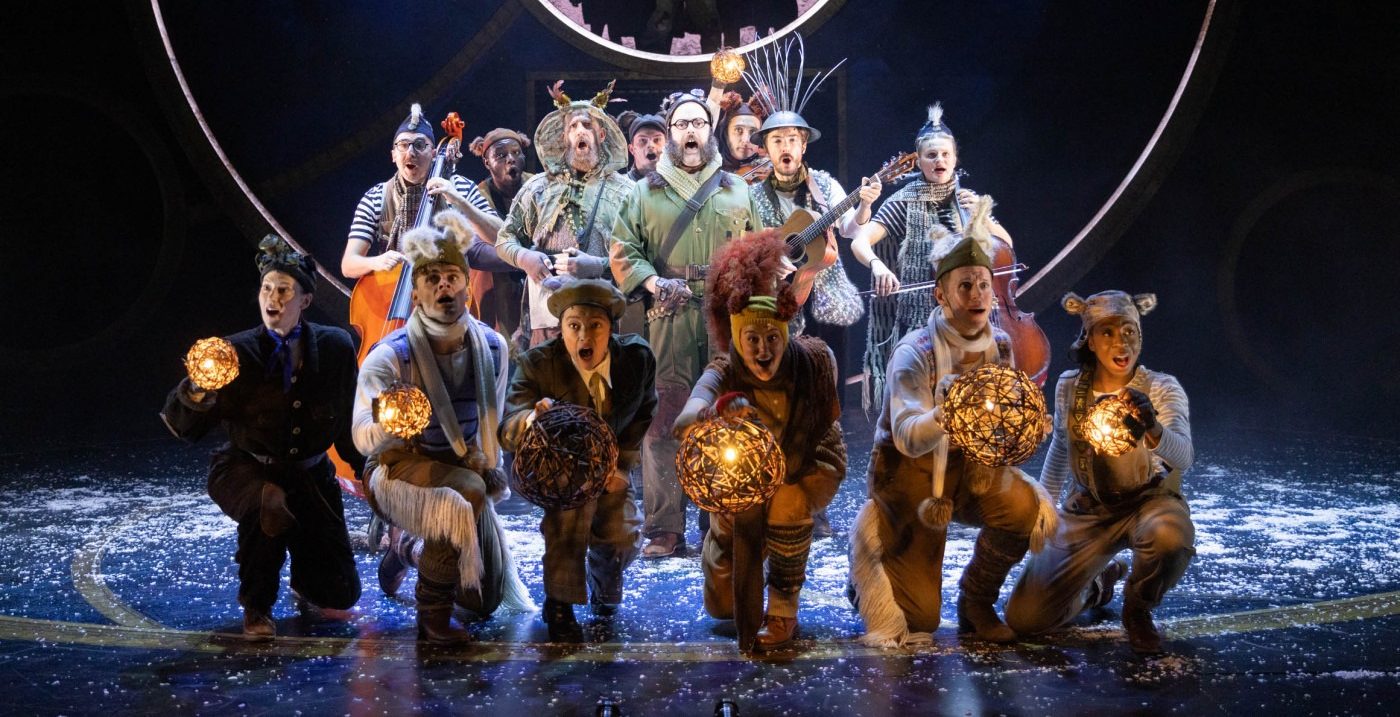The Lion, the Witch and the Wardrobe theatre review: the magic amongst the darkness
War and conflict umbrella the theatre production of The Lion, the Witch and the Wardrobe, bringing with it a sense of darkness that only magic can shine through. This adaptation of C.S. Lewis’ novel of the same name contains some originality through the use of musical numbers, but largely contains the plot and relationships as intended by the source material.
As the audience settles into their seats, a man dressed in World War Two army uniform and a helmet sits at a piano almost centre stage. The audience are instructed to turn off their mobile devices by a bomb warning-esque public announcement.
An array of characters enter the stage to the bitter-sweet melody of “We’ll Meet Again” as we are introduced to the dysfunctional Pevensie children, making their late appearance on the train platform. They board their steam train and are taken away from the city, which dances elegantly across the stage. In this moment, the audience are given their first introduction to how magic will be brought to the play through the portrayal of inanimate objects being brought to life.
Through the use of coloured lighting, both the darkness of the Witch and the goodness of Aslan are magnified. The first time the lion’s name is mentioned, the stage brightens at his name. The domineering nature of the Witch is portrayed through her command of the stage, as she is seen rising above the rest of the cast and surrounded by her demonic creatures.
Other elements of the set stand out spectacularly through the use of lighting too. The personification of darkness and light embody many of the scenes. For example, the wardrobe itself entices Lucy towards it with its glowing nature, especially among the darkness of an unfamiliar place. Notes of the original material particularly shine through for fans of the Chronicles of Narnia series when the children talk to the Professor about Narnia. His speculation about the world in the wardrobe makes the audience feel inquisitive.
As Lucy emerges through to Narnia, the stage is enveloped by the forest’s personality. The use of draping white sheets which become costumes creates the vision of snow blanketing across Narnia. Later, we see how costume choices emphasise the playful nature of the beastly ensemble. For example, a racket is used for the beaver’s tails. The animals don’t look garish, due to a good balance between animal and human features. However, the portrayal of the Witch’s creatures and the puppetry used for Aslan are strangely executed. These characters are embodied through a dysfunctional mesh of robotic features, dark fur and pointed ears enlivened through growls and Maugrims’ angered attacks. Both the puppet created to be the Lion and the costume worn by his human counterpart (Oliver Hoare) are fantastic but the meshing of these aspects into one seems unnecessary.
Tumnus’ ability to mesh between dialogue and song illustrates the multi-talented cast able to both play and act intermittently.
Some elements of the ensemble of beasts are brilliantly comedic. The biggest laugh of the night came when the Pevensie children removed their coats and the Beavers exclaimed “Detachable fur!” in shock. Furthermore, the innately childish nature of the Pevensies, such as Edmund’s impatience, provides an endearing relationship with the characters and provides humourous relief from the conflict that surrounds the children.
The live musical score adds familiarity to those who are fans of the film, particularly to the motif of Narnia. Tumnus’ ability to mesh between dialogue and song illustrates the multi-talented cast able to both play and act intermittently. The ensemble alternates between supporting with their instruments and adding tasteful vocal harmonies.
Most impressive is the performance of the cellists who appear in a large proportion of the play, stood with their instruments on a neck brace so that they can play and move simultaneously.
Overall, the play successfully balances between gloominess and joy.
The ensemble were a highlight of the play, providing a wealth of Narnian magic. A magnificent scene, particularly for this time of year, is the entrance of Father Christmas, or, as described in his own song “Myre, the gift giver / Sinterklaas / King Winter” which provides a heartwarming introduction to Act 2. The reindeer and their festive singing emphasises the improving nature of Narnia since the Pevensies arrival.
In the final moments of the play, the connection between the siblings has clearly grown and we get to see a much closer side of their relationships with one another. The way they come together to bring Narnia into a new age is an important element of how heartwarming the play feels. Overall, the play successfully balances between gloominess and joy. The primary way that this is portrayed throughout is through music on stage. As we prepare to part with the performers, they grace us with one final rendition of their most tuneful song, “100 Years of Winter”.
The play is showing at The Rep in Birmingham until 28 January 2024.

Comments